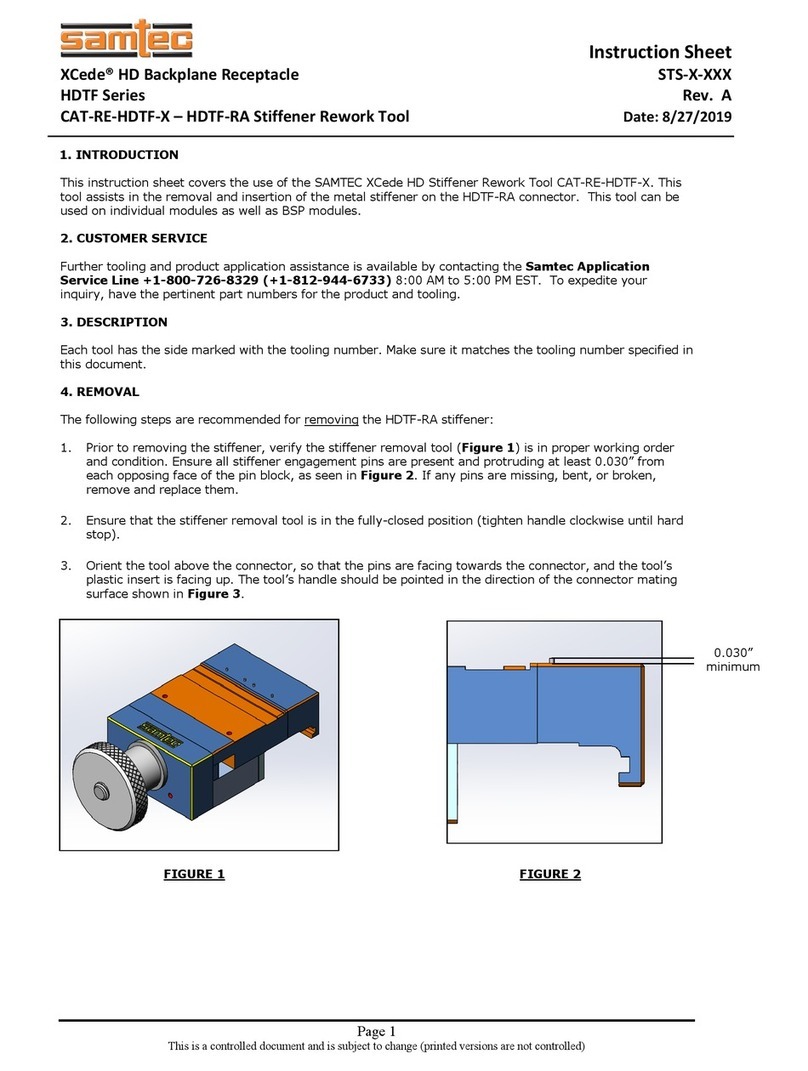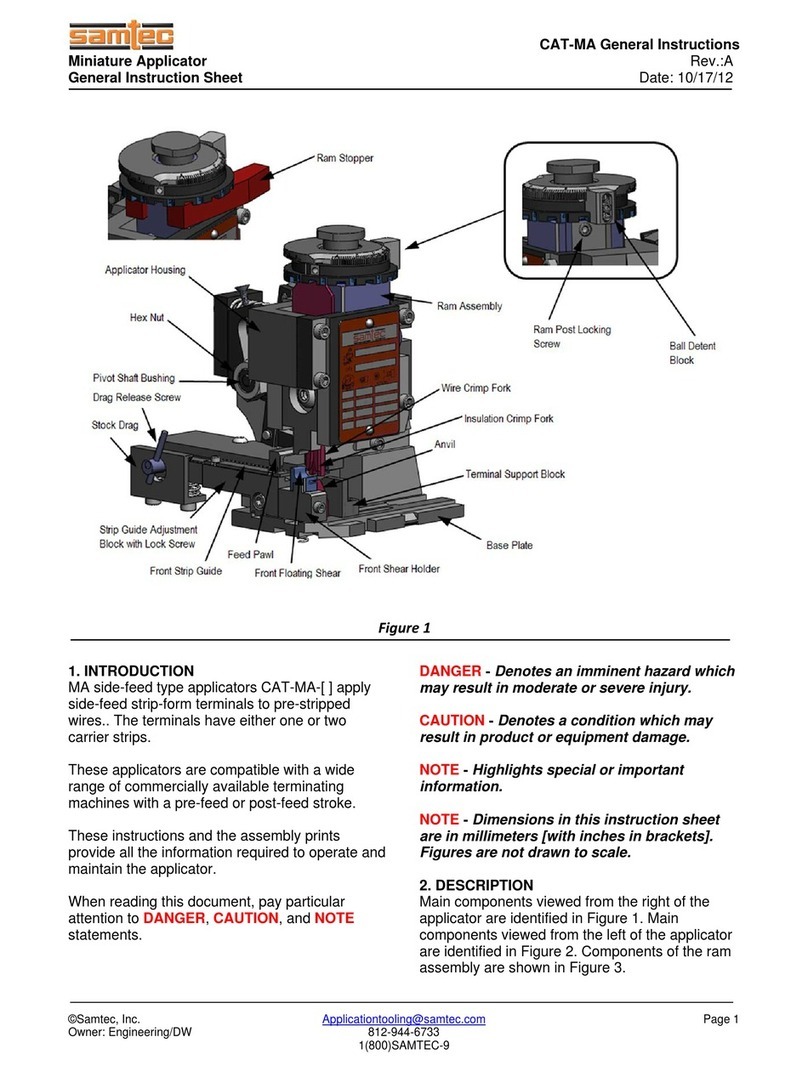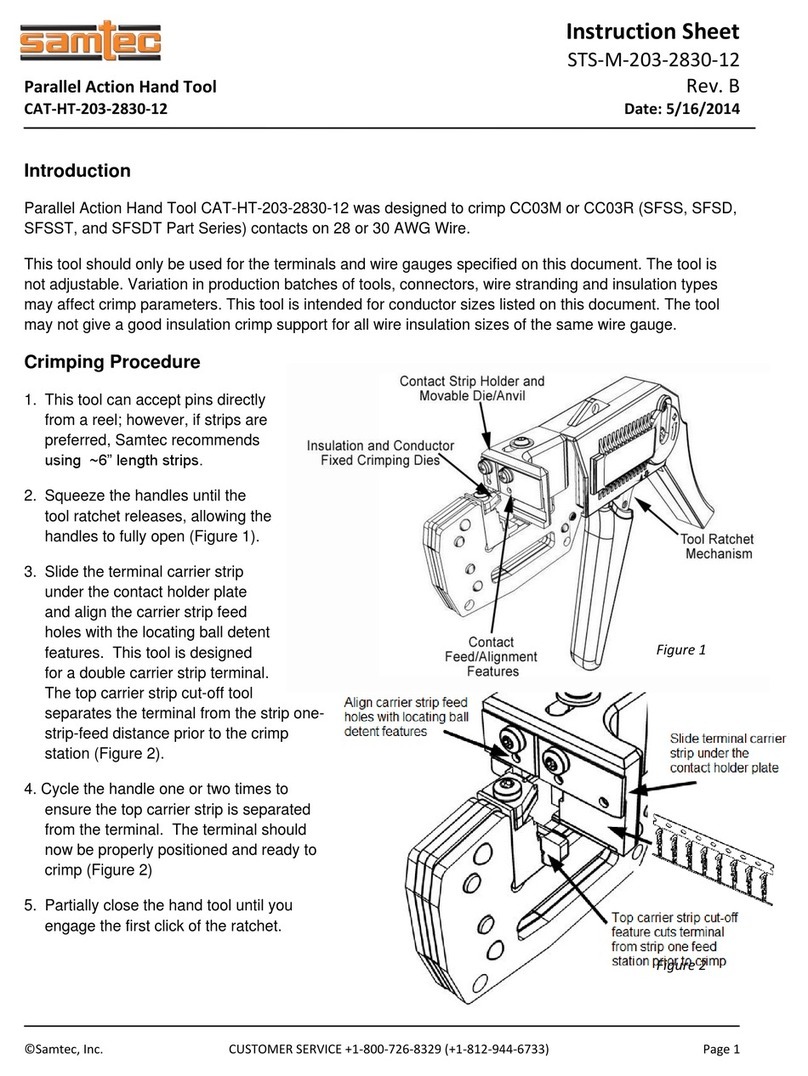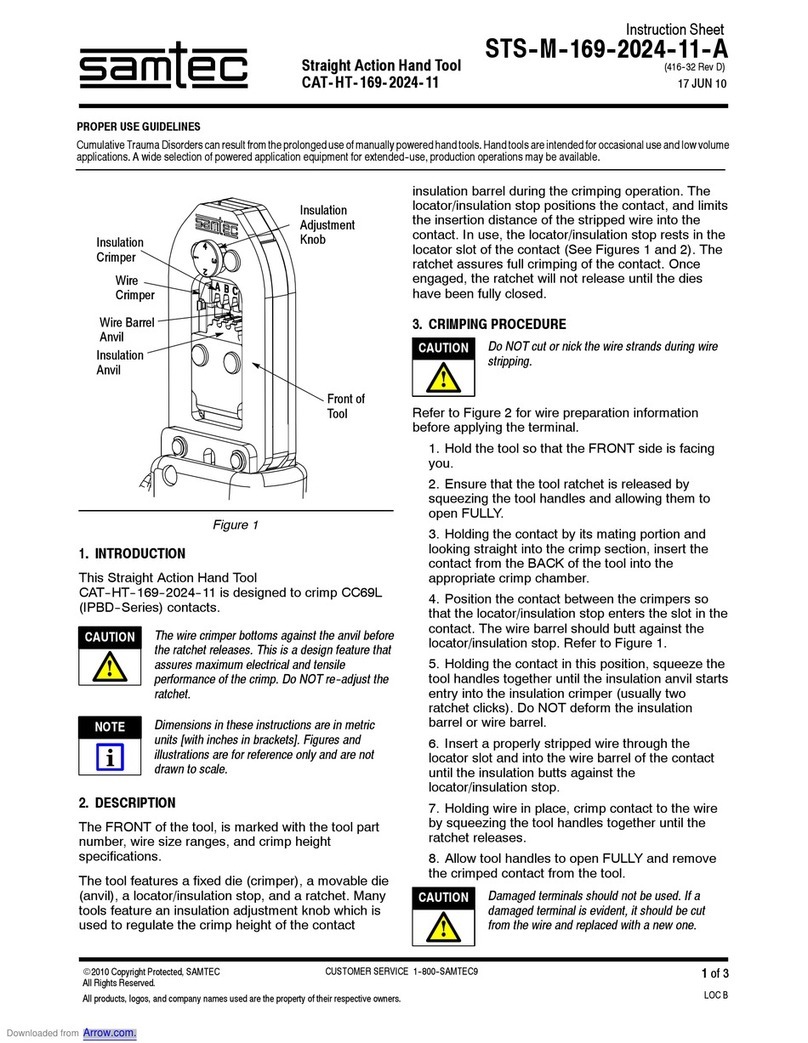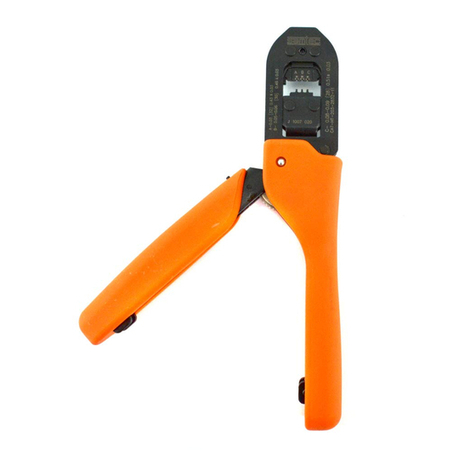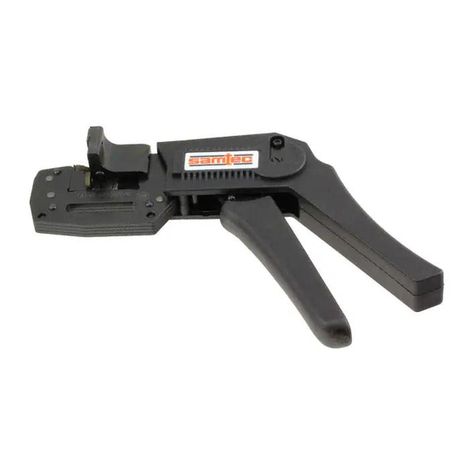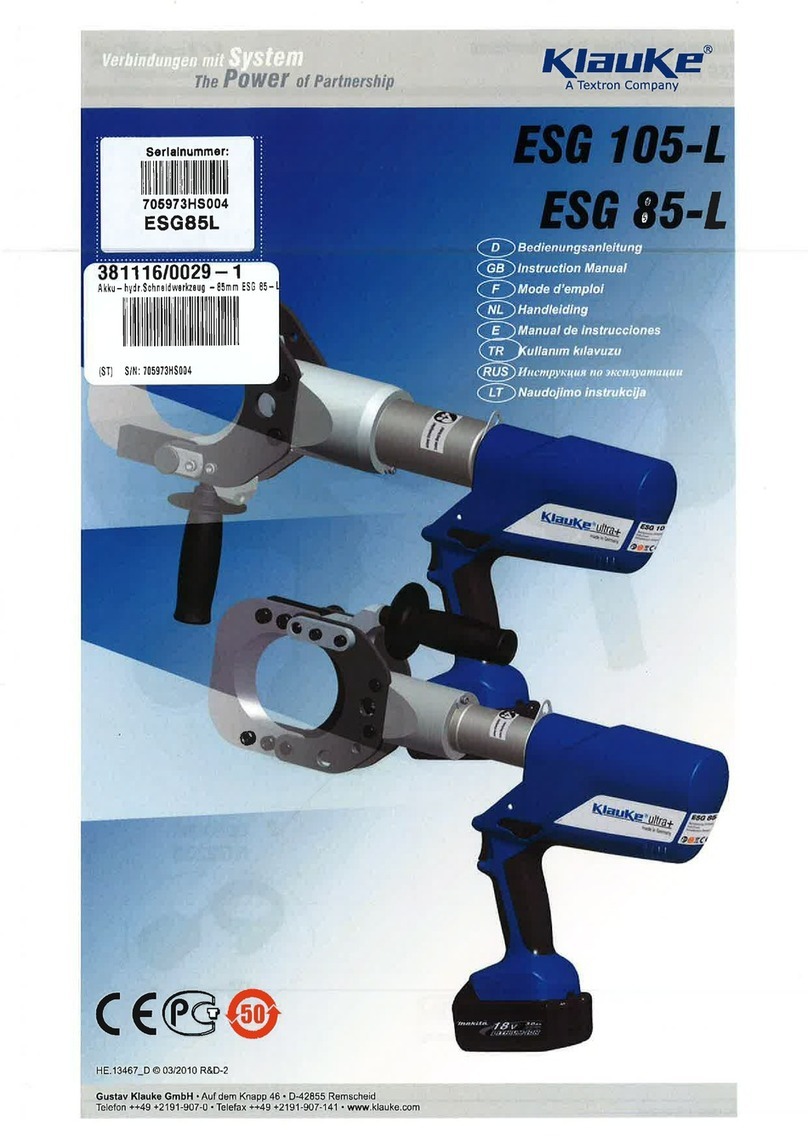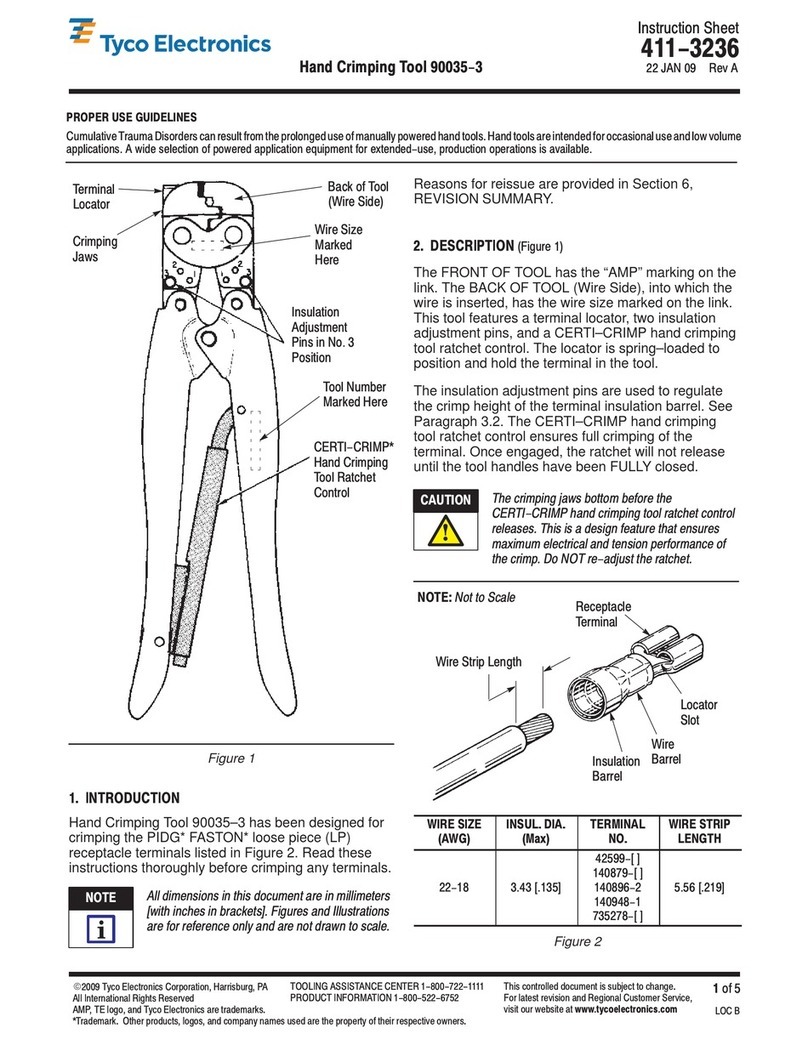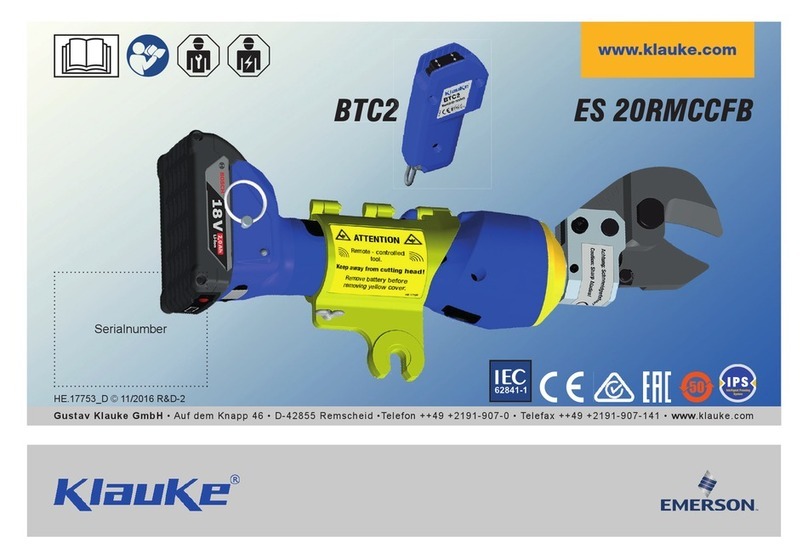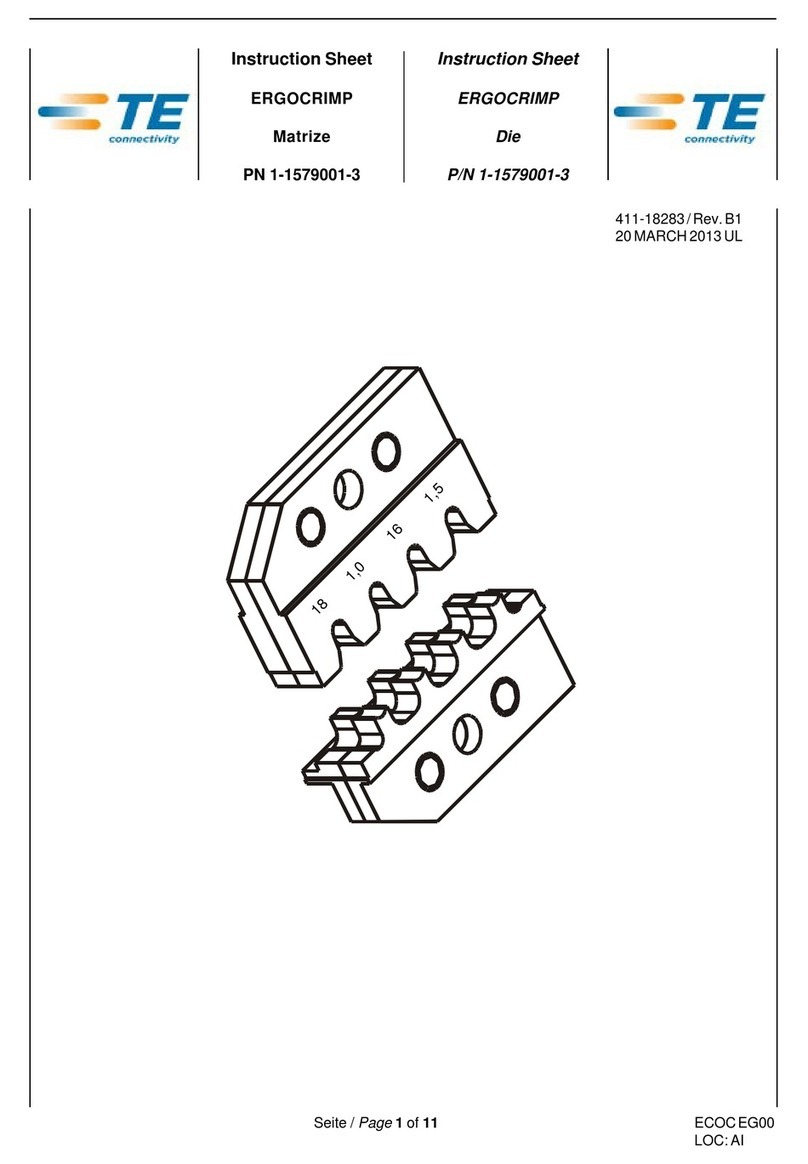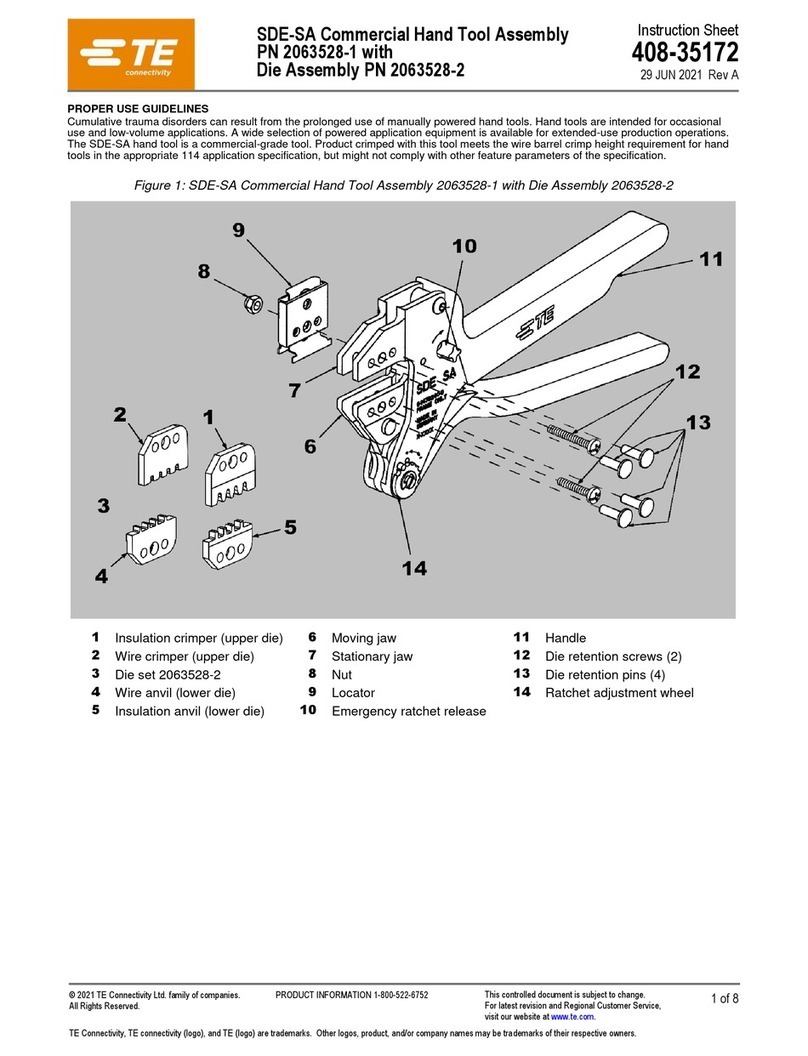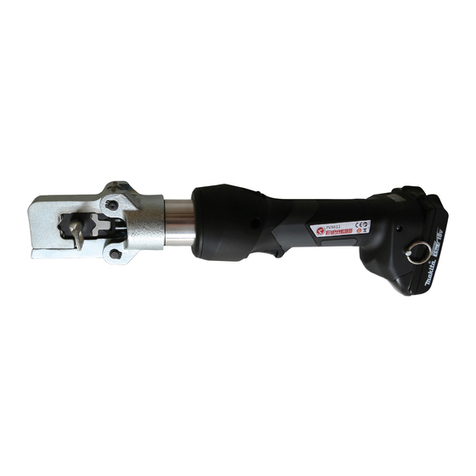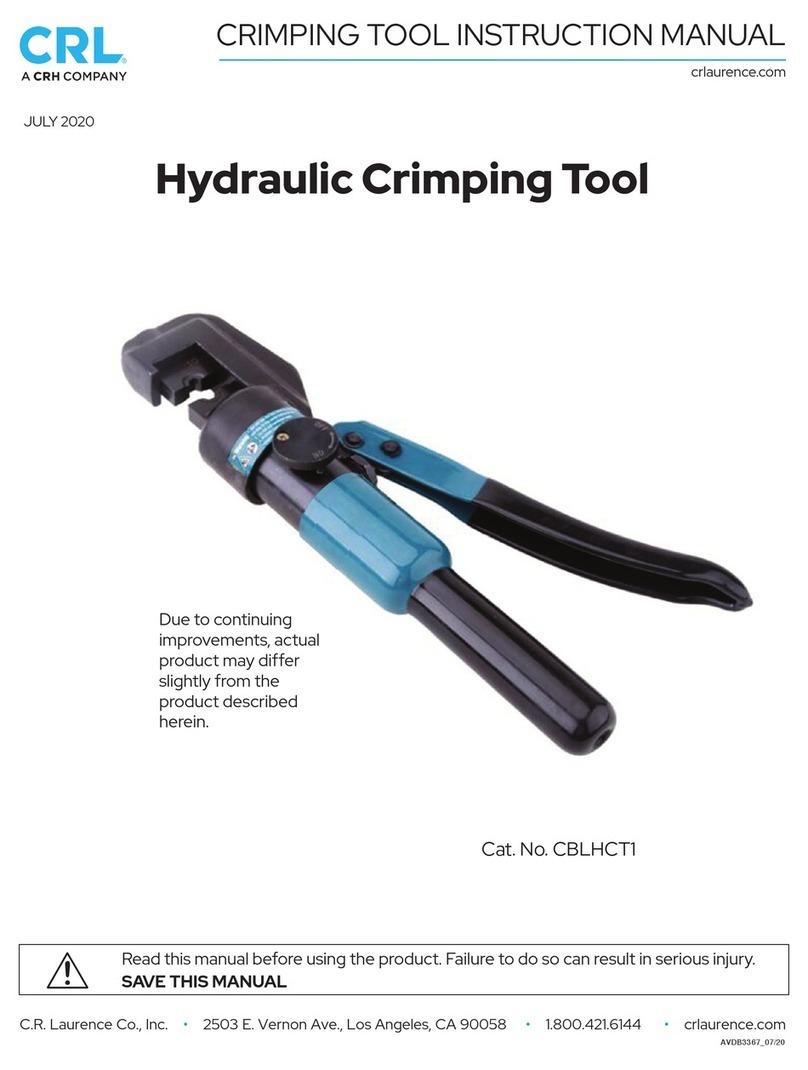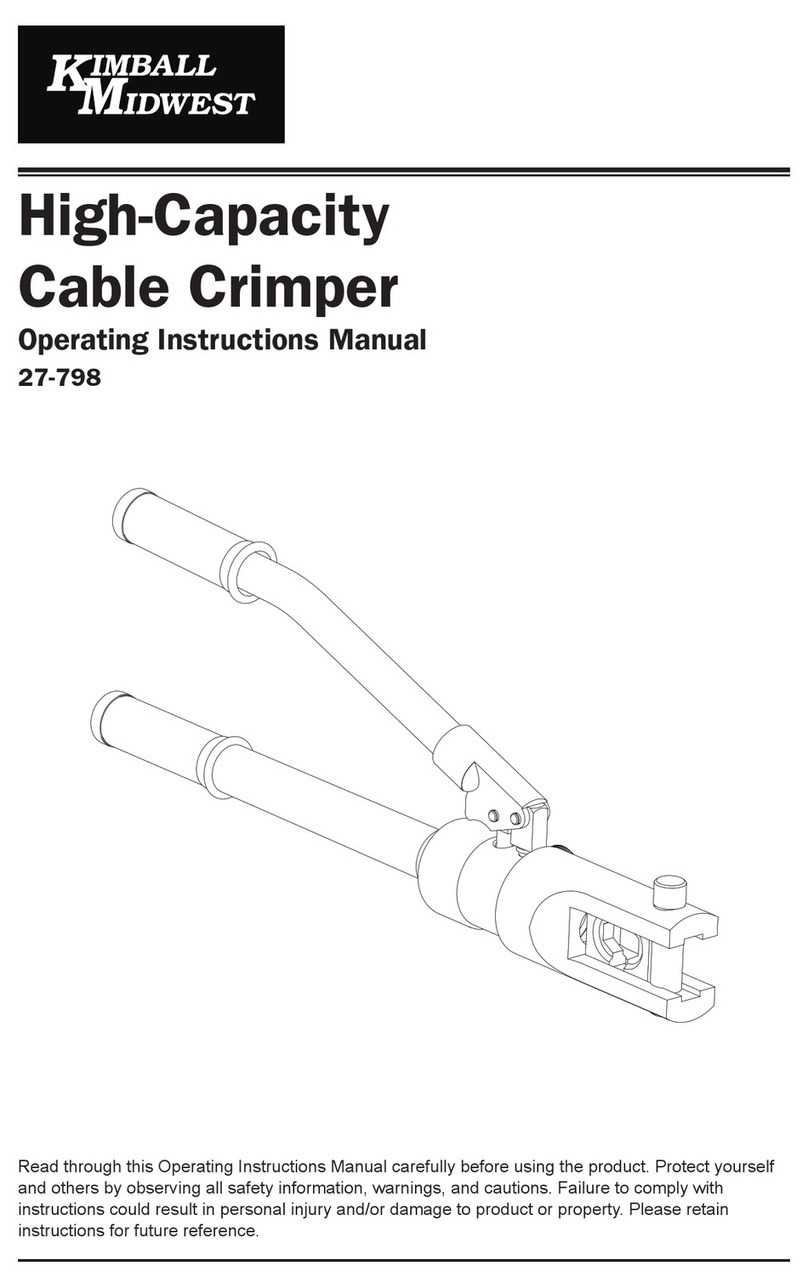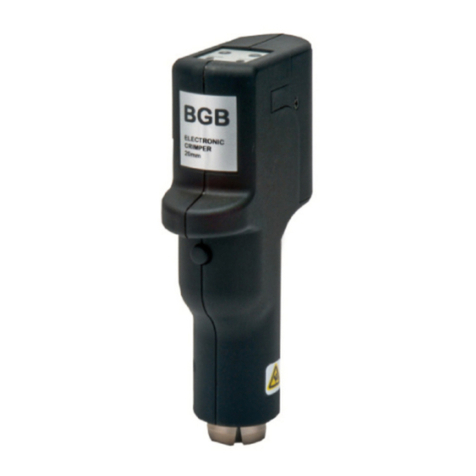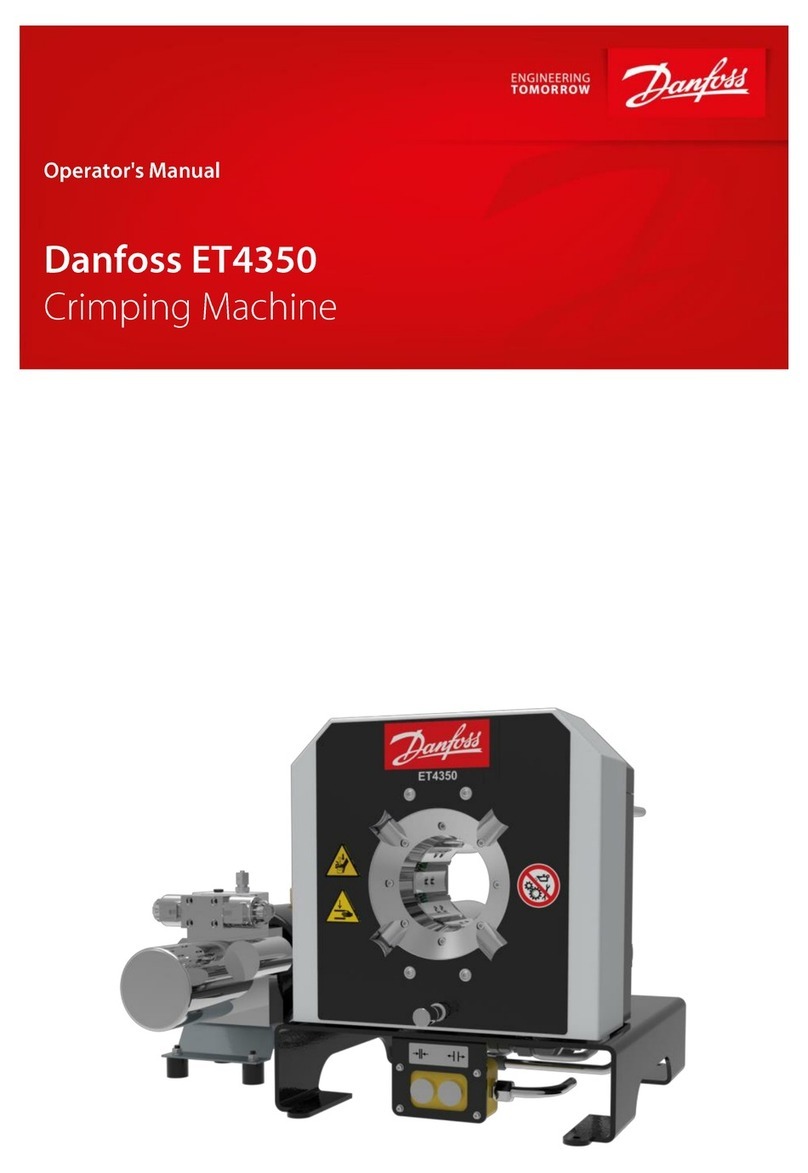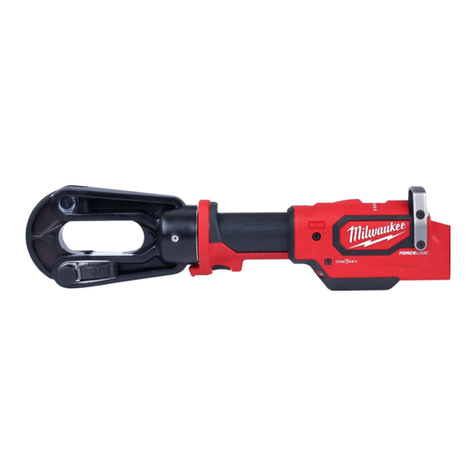Figure 2
9. If a terminal becomes jammed in a crimp nest,
open the tool jaws using the“Emergency Ratchet
Release Button” on the moving handle lever.
On many tools, the insulation barrel crimp height is
regulated by the insulation adjustment knob
(Figure 3). The insulation crimp should hold the
insulation firmly without cutting into the insulation.
To determine the proper insulation crimp setting, test
crimp a loose piece contact using the setting which
corresponds to the insulation diameter: (1) –– small;
(2) and (3) –– medium; or (4) –– large. If the crimped
insulation barrel is too tight or loose, change the
setting by pulling out and rotating the adjustment
knob to the desired setting.
Figure 3
It is recommended that a maintenance and inspection
program be performed periodically to ensure
dependable and uniform terminations. Frequency of
inspection depends on:
The care, amount of use, and handling of the
hand tool,
The presence of abnormal amounts of dust and
dirt,
Your own established standards.
The hand tool is inspected before being shipped;
however, it is recommended that the tool be inspected
immediately upon its arrival at your facility to ensure
that the tool has not been damaged during shipment.
1. Remove dust, moisture, and other contaminants
with a clean brush, or a soft, lint–free cloth. Do not
use objects that could damage the tool.
2. Make certain that the retaining pins are in place
and that they are secured with retaining rings.
3. All pins, pivot points, and bearing surfaces
should be protected with a thin coat of any good
SAE 20 oil. Do not oil excessively.
4. When the tool is not in use, keep handles closed
to prevent objects from becoming lodged in the
crimping jaws.
5. Store the tool in a clean, dry area.
Lubricate all pins, pivot points, and bearing surfaces
with SAE 20 oil as follows:
Tools used in daily production – lubricate daily
Tools used daily (occasional) – lubricate weekly
Tools used weekly – lubricate monthly
Wipe excess oil from tool, particularly from crimping
area. Oil transferred from the crimping area onto
certain terminations may affect the electrical
characteristics of an application.
1. The hand tool may be immersed (handles
partially closed) in a reliable commercial
degreasing compound (suitable for plastics) to
remove accumulated dirt, grease and foreign
matter.

